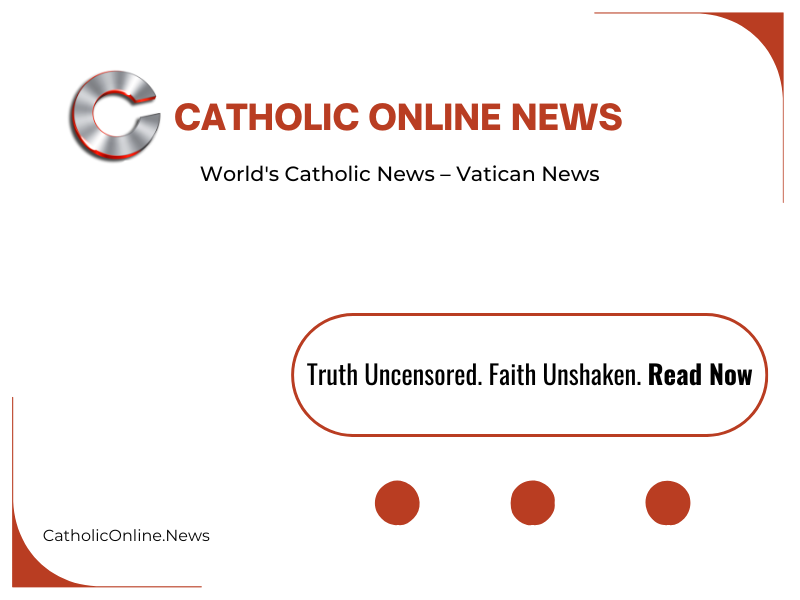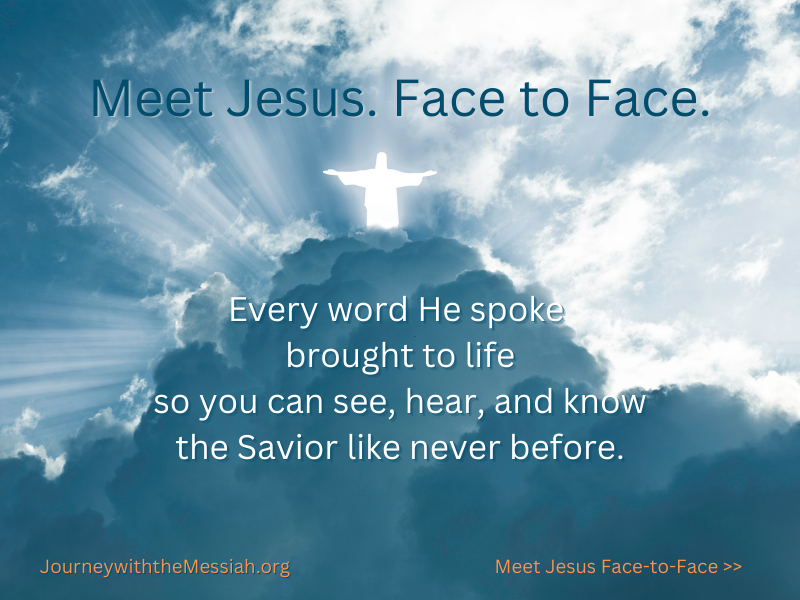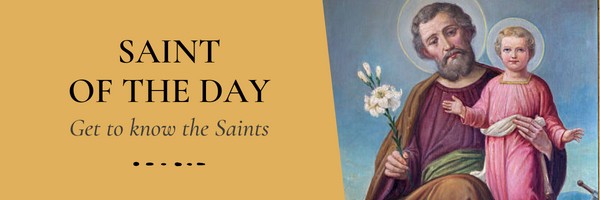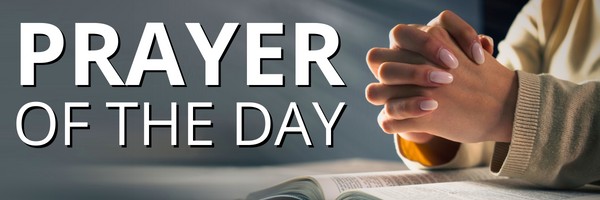 Dear readers, Catholic Online was de-platformed by Shopify for our pro-life beliefs. They shut down our Catholic Online, Catholic Online School, Prayer Candles, and Catholic Online Learning Resources essential faith tools serving over 1.4 million students and millions of families worldwide. Our founders, now in their 70's, just gave their entire life savings to protect this mission. But fewer than 2% of readers donate. If everyone gave just $5, the cost of a coffee, we could rebuild stronger and keep Catholic education free for all. Stand with us in faith. Thank you. Help Now >
Dear readers, Catholic Online was de-platformed by Shopify for our pro-life beliefs. They shut down our Catholic Online, Catholic Online School, Prayer Candles, and Catholic Online Learning Resources essential faith tools serving over 1.4 million students and millions of families worldwide. Our founders, now in their 70's, just gave their entire life savings to protect this mission. But fewer than 2% of readers donate. If everyone gave just $5, the cost of a coffee, we could rebuild stronger and keep Catholic education free for all. Stand with us in faith. Thank you. Help Now >
Chronology of the Life of Jesus Christ
FREE Catholic Classes
In the following paragraphs we shall endeavour to establish the absolute and relative chronology of our Lord's life, i.e. we shall show first how certain facts connected with the history of Jesus Christ fit in with the course of universal history, and secondly how the rest of the life of Jesus must be arranged according to the inter-relation of its single elements.
I. ABSOLUTE CHRONOLOGY
The incidents whose absolute chronology may be determined with more or less probability are the year of Christ's nativity, of the beginning of His public life, and of His death. As we cannot fully examine the data entering into these several problems, the reader ought to compare what has been said on these points in the article B IBLICAL C HRONOLOGY .
A. The NativitySt. Matthew (2:1) tells us that Jesus was born "in the days of King Herod ". Josephus (Ant., XVII, viii, 1) informs us that Herod died after ruling thirty four years de facto , thirty seven years de jure . Now Herod was made rightful king of Judea A.U.C. 714, while he began his actual rule after taking Jerusalem A.U.C. 717. As the Jews reckoned their years from Nisan to Nisan, and counted fractional parts as an entire year, the above data will place the death of Herod in A.U.C. 749, 750, 751. Again, Josephus tells us from that an eclipse of the moon occurred not long before Herod's death; such an eclipse occurred from 12 to 13 March, A.U.C. 750, so that Herod must have died before the Passover of that year which fell on 12 April ( Josephus, "Ant"., iv, 4; viii, 4). As Herod killed the children up to two years old, in order to destroy the new born King of the Jews, we are led to believe that Jesus may have been born A.U.C. 747, 748, 749. The enrollment under Cyrinus mentioned by St. Luke in connection with the nativity of Jesus Christ, and the remarkable astronomical conjunction of Mars, Jupiter, and Saturn in Pisces, in the spring of A.U.C. 748, will not lead us to any more definite result.
The date of the beginning of Christ's ministry may be calculated from three different data found respectively in Luke 3:23 ; Josephus, "Bel. Jud." I, xxi, 1; or "Ant.", XV, ii, 1; and Luke 3:1 .
The first of these passages reads: "And Jesus himself was beginning about the age of thirty years". The phrase "was beginning" does not qualify the following expression "about the age of thirty years", but rather indicates the commencement of the public life. As we have found that the birth of Jesus falls within the period 747-749 A.U.C. , His public life must begin about 777-779 A.U.C.
Second, when, shortly before the first Pasch of His public life, Jesus had cast the buyers and sellers out of the Temple, the Jews said: "Six and forty years was this temple in building" ( John 2:20 ). Now, according to the testimony of Josephus (loc. cit.), the building of the Temple began in the fifteenth year of Herod's actual reign or in the eighteenth of his reign de jure , i.e. 732 A.U.C. ; hence, adding the forty six years of actual building, the Pasch of Christ's first year of public life must have fallen in 778 A.U.C.
Third, the Gospel of St. Luke (3:1) assigns the beginning of St. John the Baptist's mission to the "fifteenth year of the Tiberius Caesar ". Augustus, the predecessor of Tiberius, died 19 August, 767 A.U.C. , so that the fifteenth year of Tiberius's independent reign is 782 A.U.C. ; but then Tiberius began to be associate of Augustus in A.U.C. 764, so that the fifteenth year reckoned from this date falls in A.U.C. 778. Jesus Christ's public life began a few months later, i.e. about A.U.C. 779.
C. The Year of the Death of ChristAccording to the Evangelists, Jesus suffered under the high priest Caiphas ( A.U.C. 772-90, or A.D. 18-36), during the governorship of Pontius Pilate A.U.C. 780-90). But this leaves the time rather indefinite. Tradition, the patristic testimonies for which have been collected by Patrizi (De Evangeliis), places the death of Jesus in the fifteenth (or sixteenth) year of Tiberius, in the consulship of the Gemini, forty-two years before the destruction of Jerusalem, and twelve years before the preaching of the Gospel to the Gentiles. We have already seen that the fifteenth year of Tiberius is either 778 or 782, according to its computation from the beginning of Tiberius's associate or sole reign; the consulship of the Gemini (Fufius and Rubellius) fell in A.U.C. 782; the forty second year before the destruction of Jerusalem is A.D. 29, or A.U.C. 782, twelve years before the preaching of the Gospel to the Gentiles brings us to the same year, A.D. 29 or A.U.C. 782, since the conversion of Cornelius, which marks the opening of the Gentile missions, fell probably in A.D. 40 or 41.
Jesus died on Friday, the fifteenth day of Nisan. That He died on Friday is clearly stated by Mark 15:42 , Luke 23:54 , and John 19:31 . The few writers who assign another day for Christ's death are practically lost in the multitude of authorities who place it on Friday. What is more, they do not even agree among themselves: Epiphanius, e.g., places the Crucifixion on Tuesday; Lactantius, on Saturday; Westcott, on Thursday; Cassiodorus and Gregory of Tours, not on Friday.
The first three Evangelists are equally clear about the date of the Crucifixion. They place the Last Supper on the fourteenth day of Nisan, as may be seen from Matthew 26:17-20 , Mark 14:12-17 and Luke 22:7-14 . Nor can there be any doubt about St. John's agreement with the Synoptic Evangelists on the question of the Last Supper and the Crucifixion. The supper was held "before the festival day of the Pasch " ( John 13:1 ), i.e. on 14 Nisan, as may be seen from Matthew 22:7-14 . Nor can there be any doubt about St. John's agreement with the Synoptic Evangelists on the question of the Last Supper and the Crucifixion. The Supper was held "before the festival day of the pasch " ( John 13:1 ), i.e. on 14 Nisan, since the sacrificial day was computed according to the Roman method (Jovino, 123 sqq., 139 sqq.).
Again, some disciples thought that Judas left the supper table because Jesus had said to him: "Buy those things which we have need of for the festival day: or that he should give something to the poor " ( John 13:29 ). If the Supper had been held on 13 Nisan this belief of the disciples can hardly be understood, since Judas might have made his purchases and distributed his alms on 14 Nisan; there would have been no need for his rushing into the city in the middle of the night. On the day of Christ's Crucifixion the Jews "went not into the hall, that they might not be defiled, but that they might eat the pasch " ( John 18:28 ). The pasch which the Jews wished to eat could not have been the paschal lamb, which was eaten on 14 Nisan, for the pollution contracted by entering the hall would have ceased at sundown, so that it would not have prevented them from sharing in the paschal supper. The pasch which the Jews had in view must have been the sacrificial offerings ( Chagighah ), which were called also pasch and were eaten on 15 Nisan. Hence this passage places the death of Jesus Christ on the fifteenth day of Nisan.
Again, Jesus is said to have suffered and died on the "parasceve of the pasch ", or simply on the "parasceve" ( John 19:14, 31 ); as "parasceve" meant Friday, the expression "parasceve" denotes Friday on which the pasch happened to fall, not the before the pasch. Finally, the day following the parasceve on which Jesus died is called "a great sabbath day " ( John 19:31 ), either to denote its occurrence in the paschal week or to distinguish it from the preceding pasch, or day of minor rest.
II. RELATIVE CHRONOLOGY
No student of the life of Jesus will question the chronological order of its principal divisions: infancy, hidden life, public life, passion, glory. But the order of events in the single divisions is not always clear beyond dispute.
A. The Infancy of JesusThe history of the infancy, for instance, is recorded only in the First Gospel and in the Third. Each Evangelist contents himself with five pictures:
- St. Matthew describes the birth of Jesus, the adoration of the Magi, the flight into Egypt, the slaughter of the Holy Innocents, and the return to Nazareth.
- St. Luke gives a sketch of the birth, of the adoration of the shepherds, of the circumcision, of the purification of the Virgin, and of the return to Nazareth.
The two Evangelists agree in the first and the last of these two series of incidents (moreover, all scholars place the birth, adoration of the shepherds, and the circumcision before the Magi ), but how are we to arrange the intervening three events related by St. Matthew with the order of St. Luke? We indicate a few of the many ways in which the chronological sequence of these facts has been arranged.
1. The birth, the adoration of the shepherds, the circumcision, the adoration of the Magi, the flight into Egypt, the slaughter of the Innocents, the purification, the return to Nazareth.This order implies that either the purification was delayed beyond the fortieth day, which seems to contradict Luke 2:22 sqq. , or that Jesus was born shortly before Herod's death. so that the Holy Family could return from Egypt within forty days after the birth of Jesus. Tradition does not seem to favour this speedy return.
2. The birth, the adoration of the shepherds, the circumcision, the adoration of the Magi, the purification, the flight into Egypt, the slaughter of the Innocents, the return to Nazareth.According to this order the Magi either arrived a few days before the purification or they came on 6 January; but in neither case can we understand why the Holy Family should have offered the sacrifice of the poor, after receiving the offerings of the Magi. Moreover, the first Evangelist intimates that the angel appeared to St. Joseph soon after the departure of the Magi, and it is not at all probable that Herod should have waited long before inquiring concerning the whereabouts of the new born king. The difficulties are not overcome by placing the adoration of the Magi on the day before the purification; it would be more unlikely in that case that the Holy Family should offer the sacrifice of the poor.
3.As Luke 2:39 appears to exclude the possibility of placing the adoration of the Magi between the presentation and return to Nazareth, there are interpreters who have located the advent of the wise men, the flight to Egypt, the slaughter of the Innocents, and the return from Egypt after the events as told in St. Luke. They agree in the opinion that the Holy Family returned to Nazareth after the purification, and then left Nazareth in order to make their home in Bethlehem. Eusebius, Epiphanius, and some other ancient writers are willing to place the adoration of the Magi about two years after Christ's birth; Paperbroch and his followers allow about a year and thirteen days between the birth and the advent of the Magi ; while Patrizi agrees with those who fix the advent of the Magi at about two weeks after the purification. The text of Matthew 2:1-2 hardly permits an interval of more than a year between the purification and the coming of the wise men; Patrizi's opinion appears to satisfy all the data furnished by the gospels, while it does not contradict the particulars added by tradition.
B. The Hidden Life of JesusIt was in the seclusion of Nazareth that Jesus spent the greatest part of His earthly life. The inspired records are very reticent about this period: Luke 2:40-52 ; Mark 6:3 ; John 6:42 ; 7:15 , are about the only passages which refer to the hidden life.
Some of them give us a general view of Christ's life: "The child grew, and grew in strength and wisdom; and the grace of God was in him" is the brief summary of the years following the return of the Holy Family after the ceremonial purification in the Temple. " Jesus advanced in wisdom, and age, and grace with God and men", and He "was subject to them" form the inspired outline of Christ's life in Nazareth after He had attained the age of twelve.
"When he was twelve years old" Jesus accompanied His parents to Jerusalem, 'according to the custom of the feast'; When they returned, the child Jesus remained in Jerusalem ; and his parents knew it not." After three days, they found him in the Temple, sitting in the midst of the doctors, hearing them, and asking them questions." It was on this occasion that Jesus spoke the only words that have come down from the period of His hidden life: "How is it that you sought me? Did you not know, that I must be about my Father's business [or, "in my Father's house"]?"
The Jews tell us that Jesus had not passed through the training of the Rabbinic schools : "How doth this man know letters, having never learned?". The same question is asked by the people of Nazareth, who add, "Is not this the carpenter?" St. Justin is authority for the statement that Jesus specially made "ploughs and yokes' (Contra Tryph., 88). Though it is not certain that at the time of Jesus elementary schools existed in the Jewish villages, it may be inferred from the Gospels that Jesus knew how to read ( Luke 4:16 ) and write ( John 8:6 ). At an early age He must have learned the so called Shema ( Deuteronomy 6:4 ), and the Hallel , or Psalms 113-118 (Hebrew); He must have been familiar with the other parts of the Scriptures too, especially the Psalms and the Prophetic Books, as He constantly refers to them in His public life. It is also asserted that Palestine at the time of Jesus Christ was practically bilingual, so that Christ must have spoken Aramaic and Greek; the indications that He was acquainted with Hebrew and Latin are rather slight. The public teaching of Jesus shows that He was a close observer of the sights and sounds of nature, and of the habits of all classes of men. For these are the usual sources of His illustrations.
To conclude, the hidden life of Jesus extending through thirty years is far different from what one should have expected in the case of a Person Who is adored by His followers as their God and revered as their Saviour; this is an indirect proof for the credibility of the Gospel story.
C. The Public Life of Jesus: Its DurationThe chronology of the public life offers a number of problems to the interpreter; we shall touch upon only two, the duration of the public life, and the successive journeys it contains.
There are two extreme views as to the length of the ministry of Jesus : St. Irenæus (Contra Haer., II, xxii, 3-6) appears to suggest a period of fifteen years; the prophetic phrases, "the year of recompenses", "the year of my redemption " ( Isaiah 34:8 ; 63:4 ), appear to have induced Clement of Alexandria, Julius Africanus, Philastrius, Hilarion, and two or three other patristic writers to allow only one year for the public life. This latter opinion has found advocates among certain recent students: von Soden, for instance, defends it in Cheyne's "Encyclopaedia Biblica". But the text of the Gospels demands a more extensive duration. St. John's Gospel distinctly mentions three distinct paschs in the history of Christ's ministry ( 2:13 ; 6:4 ; 11:55 ). The first of the three occurs shortly after the baptism of Jesus, the last coincides with His Passion, so that at least two years must have intervened between the two events to give us the necessary room for the passover mentioned in 6:4 . Westcott and Hort omit the expression "the pasch " in 6:4 to compress the ministry of Jesus within the space of one year; but all the manuscripts, the versions, and nearly all the Fathers testify for the reading "En de eggysto pascha heeorteton Ioudaion" : "Now the pasch, the festival day of the Jews, was near at hand". Thus far then everything tends to favour the view of those writers and more recent commentators who extend the period of Christ's ministry a little over two years.
But a comparison of St. John's Gospel with the Synoptic Evangelists seems to introduce another pasch, indicated in the Fourth Gospel , into Christ's public life. John 4:45 , relates the return of Jesus into Galilee after the first pasch of His public life in Jerusalem, and the same event is told by Mark 1:14 , and Luke 4:14 . Again the pasch mentioned in John 6:4 has its parallel in the "green grass" of Mark 6:39 , and in the multiplication of loaves as told in Luke 9:12 sqq. But the plucking of ears mentioned in Mark 2:23 , and Luke 6:1 , implies another paschal season intervening between those expressly mentioned in John 2:13 and 6:4 . This shows that the public life of Jesus must have extended over four paschs, so that it must have lasted three years and a few months. Though the Fourth Gospel does not indicate this fourth pasch as clearly as the other three, it is not wholly silent on the question. The "festival day of the Jews " mentioned in John 5:1 , has been identified with the Feast of Pentecost, the Feast of Tabernacles, the Feast of Expiation, the Feast of the New Moon, the Feast of Purim, the Feast of Dedication, by various commentators; others openly confess that they cannot determine to which of the Jewish feasts this festival day refers. Nearly all difficulties will disappear if the festival day be regarded as the pasch, as both the text ( heorte ) and John 4:35 seem to demand (cf. Dublin Review, XXIII, 351 sqq.).
D. The Public Life of Jesus: His JourneysThe journeys made during His public life may be grouped under nine heads: the first six were mainly performed in Galilee and had Capharnaum for their central point; the last three bring Jesus into Judea without any pronounced central point. We cannot enter into the disputed questions connected with the single incidents of the various groups.
1. First Journey. December, A.U.C. 778 - Spring, 779. (Cf. John 1:2 ; Matthew 3:4 ; Mark 1 ; Luke 3:4 )
Jesus abandons His hidden life in Nazareth, and goes to Bethania across the Jordan, where He is baptized by John and receives the Baptist's first testimony to His Divine mission. He then withdraws into the desert of Judea, where He fasts for forty days and is tempted by the devil. After this He dwells in the neighbourhood of the Baptist's ministry, and receives the latter's second and third testimony; here too He wins His first disciples, with whom He journeys to the wedding feast at Cana in Galilee, where He performs His first miracle. Finally He transfers His residence, so far as there can be question of a residence in His public life, to Capharnaum, one of the principal thoroughfares of commerce and travel in Galilee.
Passover, A.U.C. 779 - about Pentecost, 780. (Cf. John 2 - 5 ; Mark 1 - 3 ; Luke 4 - 7 ; Matthew 4 - 9 )
Jesus goes from Capharnaum to Jerusalem for the Feast of the Passover ; here he expels the buyers and sellers from the Temple, and is questioned by the Jewish authorities. Many believed in Jesus, and Nicodemus came to converse with Him during the night. After the festival days He remained in Judea till about the following December, during which period He received the fourth testimony from John who was baptizing at Ennon (A.V. Aenon). When the Baptist had been imprisoned in Machaerus, Jesus returned to Galilee by way of Samaria where He met the Samaritan woman at Jacob's well near Sichar; He delayed two days in this place, and many believed in Him.
Soon after His return into Galilee we find Jesus again in Cana, where He heard the prayer who pleaded for the recovery of his dying son in Capharnaum. The rejection of Jesus by the people of Nazareth, whether at this time as, St. Luke intimates, or at a later period, as St. Mark seems to demand, or again both now and about eight months later, is an exegetical problem we cannot solve here. At any rate, shortly afterwards Jesus is mostly actively engaged in Capharnaum in teaching and healing the sick, restoring among others Peter's mother-in-law and a demoniac. On this occasion He called Peter and Andrew, James and John. Then followed a missionary tour through Galilee during which Jesus cured a leper ; soon he again taught in Capharnaum, and was surrounded by such a multitude that a man sick of the palsy had to be let down through the roof in order to reach the Sacred Presence. After calling Matthew to the Apostleship, He went to Jerusalem for the second pasch occurring during His public life, it was on this occasion that He healed the man who been sick for thirty-eight years near the pool at Jerusalem. The charge of violating the Sabbath and Christ's answer were the natural effects of the miracle. The same charge is repeated shortly after the pasch ; Jesus had returned to Galilee, and the disciples plucked some ripe ears in the corn fields. The question became more acute in the immediate future; Jesus had returned to Capharnaum, and there healed on the Sabbath day a man who had a withered hand. The Pharisees now make common cause with the Herodians in order to "destroy him". Jesus withdraws first to the Sea of Galilee, where He teaches and performs numerous miracles ; then retires to the Mountain of Beatitudes , where He prays during the night, chooses His Twelve Apostles in the morning, and preaches the Sermon on the Mount. He is brought back to Capharnaum by the prayers of the centurion who asks and obtains the of his servant.
3. Third Journey. About Pentecost, A.U.C. 780- Autumn, 780. (Cf. Luke 7:8 ; Mark 3:4 ; Matthew 4 , 8 , 9 , 12 , 13 )
Jesus makes another missionary tour through Galilee ; He resuscitates the son of the widow at Naim, and shortly afterwards receives the messengers sent by John from his prison in Machaerus. Then follows the scene of the merciful reception of the sinful woman who anoints the feet of the Lord while He rests at table in Magdala or perhaps in Capharnaum ; for the rest of His missionary tour Jesus is followed by a band of pious women who minister to the wants of the Apostles. After returning to Capharnaum, Jesus expels the mute devil, is charged by the Pharisees with casting out devils by the prince of devils, and encounters the remonstrances of His kinsmen. Withdrawing to the sea, He preaches what may be called the "Lake Sermon", consisting of seven parables.
Autumn, A.U.C. 780- about Passover, 781. (Cf. Luke 8:9 ; Mark 4 - 6 ; Matthew 8 , 9 , 10 , 13 , 14 )
After a laborious day of ministry in the city of Capharnaum and on the lake, Jesus with His Apostles crosses the waters. As a great storm overtakes them, the frightened Apostles awaken their sleeping Master, Who commands the winds and the waves. Towards morning they meet in the country of the Gerasens, on the east of the lake, two demoniacs. Jesus expels the evil spirits , but allows them to enter into a herd of swine. The beasts destroy themselves in the waters of the lake, and frightened inhabitants beg Jesus not to remain among them. After returning to Capharnaum he heals the woman who had touched the hem of His garment, resuscitates the daughter of Jairus, and gives sight to two blind men. The second Gospel places here Christ's last visit to and rejection by the people of Nazareth. Then follows the ministry of the Apostles who are sent two by two, while Jesus Himself makes another missionary tour through Galilee. It seems to have been the martyrdom of John the Baptist that occasioned the return of the Apostles and their gathering around the Master in Capharnaum. But, however depressing this event may have been, it did not damp the enthusiasm of the Apostles over their success.
Spring, A.U.C. 781. (Cf. John 6 ; Luke 9 ; Mark 6 ; and Matthew 14 )
Jesus invites the Apostles, tired out from their missionary labours, to rest awhile. They cross the northern part of the Sea of Galilee, but, instead of finding the desired solitude, they are met by multitudes of people who had preceded them by land or by boat, and who were eager for instruction. Jesus taught them throughout the day, and towards evening did not wish to dismiss them hungry. On the other hand, there were only five loaves and two fishes at the disposal of Jesus ; after His blessing, these scanty supplies satisfied the hunger of five thousand men, besides women and children, and remnants filled twelve baskets of fragments. Jesus sent the Apostles back to their boats, and escaped from the enthusiastic multitudes, who wished to make Him king, into the mountain where He prayed till far into the night. Meanwhile the Apostles were facing a contrary wind till the fourth watch in the morning, when they saw Jesus walking upon the waters. The Apostles first fear, and then recognize Jesus ; Peter walks upon the water as long as his confidence lasts; the storm ceases when Jesus has entered the boat. The next day brings Jesus and His Apostles to Capharnaum, where He speaks to the assembly about the Bread of Life and promises the Holy Eucharist, with the result that some of His followers leave Him, while the faith of His true disciples is strengthened.
About May, A.U.C. 781- Sept., 781. (Cf. Luke 9 ; Mark 7-9 ; Matthew 14-18 ; John 7 )
It may be owing to the enmity stirred up against Jesus by His Eucharistic discourse in Capharnaum that He began now a more extensive missionary tour than He had made in the preceding years of His life. Passing through the country of Genesar, He expressed His disapproval of the Pharisaic practices of legal purity. Within the boarders of Tyre and Sidon He exorcized the daughter of the Syrophoenician woman. From here Jesus travelled first towards the north, then towards the east, then south-eastward through the northern part of Decapolis, probably along the foot of the Lebanon, till He came to the eastern part of Galilee. While in Decapolis Jesus healed a deaf-mute, employing a ceremonial more elaborate than He had used at any of His previous miracles ; in the eastern part of Galilee, probably not far from Dalmanutha and Magedan, He fed four thousand men, besides children and women, with seven loaves and a few little fishes, the remaining fragments filling seven baskets. The multitudes had listened for three days to the teaching of Jesus, previously to the miracle. In spite of the many cures performed by Jesus, during this journey, on the blind, the dumb, the lame, the maimed, and on many others, the Pharisees and Sadducees asked Him for a sign from heaven, tempting Him. He promised them the sign of Jonas the Prophet. After Jesus and the Apostles had crossed the lake, He warned them to beware of the leaven of the Pharisees ; then they passed through Bethsaida Julias where Jesus gave sight to a blind man. Next we find Jesus in the confines of Caesarea Philippi, where Peter professes his faith in Christ, the Son of the living God , and in his turn receives from Jesus the promise of the power of the keys. Jesus here predicts His passion, and about a week later is transfigured before Peter, James, and John, probably on the top of Mt.Thabor. On descending from the mountain, Jesus exorcizes the mute devil whom His disciples had not been able to expel. Bending his way towards Capharnaum, Jesus predicts His Passion for the second time, and in the city pays the tribute-money for Himself and Peter. This occasions the discussion as to the greater in the kingdom of heaven, and the allied discourses. Finally, Jesus refuses His brethren's invitation to go publicly to the Feast of Tabernacles in Jerusalem.
Sept., A.U.C. 781- December, 781. (Cf. Luke 9-13 ; Mark 10 ; Matthew 6 , 7 , 8 , 10 , 11 , 12 , 24 ; John 7-10 )
Jesus now "steadfastly set His face to go Jerusalem ", and as the Samaritans refused Him hospitality, He had to take the east of the Jordan. While still in Galilee, He refused the discipleship of several half-hearted candidates, and about the same time He sent other seventy-two, two by two, before His face into every city and place whither He Himself was to come. Probably in the lower part of Peraea, the seventy-two returned with joy, rejoicing in the miraculous power that had been exercised by them. It must have been in the vicinity of Jericho that Jesus answered the lawyer's question, "Who is my neighbour?" by the parable of the Good Samaritan. Next Jesus was received in the hospitable home of Mary and Martha, where He declares Mary to have chosen the better part. From Bethania He went to Jerusalem for the Feast of Tabernacles , where he became involved in discussions with the Jews. The Scribes and Pharisees endeavoured to catch Him in the sentence which they asked Him to pronounce in the case of the woman taken in adultery. When Jesus had avoided this snare, He continued His discussions with the hostile Jews. Their enmity was intensified because Jesus restored sight to a blind man on the Sabbath day. Jesus appears to have His stay in Jerusalem with the beautiful discourse on the Good Shepherd. A little later He teaches His Apostles the Our Father, probably somewhere on Mt. Olivet. On a subsequent missionary tour through Judea and Peraea He defends Himself against the charges of Pharisees, and reproves their hypocrisy. On the same journey Jesus warned against hypocrisy, covetousness, worldly care; He exhorted to watchfulness, patience under contradictions, and to penance. About this time, too, He healed the woman who had the spirit of infirmity.
December, A.U.C. 781-February, 782. (Cf. Luke 13 - 17 ; John 10:11 )
The Feast of Dedication brought Jesus again to Jerusalem, and occasioned another discussion with the Jews. This is followed by another missionary tour through Peraea, during which Jesus explained a number of important points of doctrine : the number of the elect, the choice of one's place at table, the guests to be invited, the parable of the great supper, resoluteness in the service of God, the parables of the hundred sheep, the lost groat, and the prodigal son, of the unjust steward, of Dives and Lazarus, of the unmerciful servant, besides the duty of fraternal correction, and the efficacy of faith. During this period, too, the Pharisees attempted to frighten Jesus with the menance of Herod's persecution ; on his part, Jesus healed a man who had dropsy, on a Sabbath day, while at table in the house of a certain prince of the Pharisees. Finally Mary and Martha send messengers to Jesus, asking Him to come and cure their brother Lazarus ; Jesus went after two days, and resuscitated His friend who had been several days in the grave. The Jews are exasperated over this miracle, and they decree Jesus must die for the people. Hence He withdrew "into a country near the desert, unto a city that is called Ephrem".
February, A.U.C. 782- Passover, 782. (Cf. Luke 17 - 22 ; Mark 10 , 14 ; Matthew 19 - 26 ; John 11 , 12 .)
This last journey took Jesus from Ephrem northward through Samaria, then eastward along the border of Galilee into Peraea, then southward through Peraea, westward across the Jordan, through Jericho, Bethania on Mt. Olivet, Bethphage, and finally to Jerusalem. While in the most northern part of the journey, He cured ten lepers ; a little later, He answered the questions raised by the Pharisees concerning the kingdom of God. Then He urged the need of incessant prayer by proposing the parable of the unjust judge; here too belong the parable of the Pharisee and Publican, the discourse on marriage, on the attitude of the Church towards the children, on the right use of riches as illustrated by the story of the rich young ruler, and the parable of the labourers in the vineyard. After beginning His route towards Jerusalem, He predicted His Passion for the third time; James and John betray their ambition, but they are taught the true standard of greatness in the Church. At Jericho Jesus heals two blind men, and receives the repentance of Zacheus the publican ; here He proposed also the parable of the pounds entrusted to the servants by the master.
Six days before the pasch we find Jesus at Bethania on Mt. Olivet, as the guest of Simon the leper ; Mary anoints His feet, and the disciples at the instigation of Judas are indignant at this seeming waste of ointment. A great multitude assembles at Bethania, not to see Jesus only but also Lazarus ; hence the chief priests think of killing Lazarus too. On the following day Jesus solemnly entered Jerusalem and was received by the Hosanna cries of all classes of people. In the afternoon He met a delegation of Gentiles in the court of the Temple. On Monday Jesus curses the barren fig tree, and during the morning He drives the buyers and sellers from the Temple. On Tuesday the wonder of the disciples at the sudden withering of the fig tree provokes their Master's instruction on the efficacy of faith. Jesus answers the enemies' questions as to His authority; then He proposes the parable of the two sons, of the wicked husbandmen, and of the marriage feast. Next follows a triple snare: the politicians ask whether it is lawful to pay tribute to Caesar ; the scoffers inquire whose wife a woman, who has had several husbands, will be after resurrection; the Jewish theologians propose the question: Which is the first commandment, the great commandment of the law ? Then Jesus proposes His last question to the Jews : "What think you of Christ ? whose son is he?" This is followed by the eightfold woe against the Scribes and Pharisees, and by the denunciation of Jerusalem. The last words of Christ in the Temple were expressions of praise for the poor widow who had made an offering of two mites in spite of her poverty. Jesus ended this day by uttering the prophecies concerning the destruction of Jerusalem, His second coming, and the future judgement; these predictions are interrupted by the parable of the ten virgins and the talents. On Wednesday Jesus again predicted His Passion ; probably it was on the same day that Judas made his agreement with the Jews to betray Jesus.
E. The Passion of Jesus: Its PreparationJesus prepares His disciples for the Passion, He prepares Himself for the ordeal and His enemies prepare themselves for the destruction of Jesus.
1. Preparation of the Apostles.Jesus prepares His Apostles for the Passion by the eating of the paschal lamb, the institution of the Holy Eucharist, the concomitant ceremonies, and His lengthy discourses held during and after the Last Supper. Special mention should be made of the prediction of the Passion, and of the betrayal one of the Apostles and the denial by another. Peter, James, and John are prepared in a more particular manner by witnessing the sorrow of Jesus on Mt. Olivet.
2. Preparation of Jesus.Jesus must have found an indirect preparation in all He did and said to strengthen His Apostles. But the preparation that was peculiarly His own consisted
Join the Movement
When you sign up below, you don't just join an email list - you're joining an entire movement for Free world class Catholic education.
An Urgent Message from Sister Sara – Please Watch
- Advent / Christmas
- 7 Morning Prayers
- Mysteries of the Rosary
- Litany of the Bl. Virgin Mary
- Popular Saints
- Popular Prayers
- Female Saints
- Saint Feast Days by Month
- Stations of the Cross
- St. Francis of Assisi
- St. Michael the Archangel
- The Apostles' Creed
- Unfailing Prayer to St. Anthony
- Pray the Rosary
![]()
Copyright 2025 Catholic Online. All materials contained on this site, whether written, audible or visual are the exclusive property of Catholic Online and are protected under U.S. and International copyright laws, © Copyright 2025 Catholic Online. Any unauthorized use, without prior written consent of Catholic Online is strictly forbidden and prohibited.
Catholic Online is a Project of Your Catholic Voice Foundation, a Not-for-Profit Corporation. Your Catholic Voice Foundation has been granted a recognition of tax exemption under Section 501(c)(3) of the Internal Revenue Code. Federal Tax Identification Number: 81-0596847. Your gift is tax-deductible as allowed by law.













